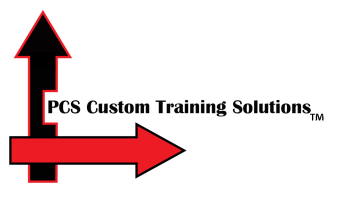The Reality of Temporary Employees and Safety
Temporary employees afford American businesses an incredible convenience — the flexibility to expand its workforce without the commitment of taking on the additional cost and commitment of hiring permanent employees.
The staffing and recruiting industry is growing; there’s no question about that, and trends have not backed off for 2017.
During the course of a year, America’s staffing companies hire nearly 15 million temporary and contract employees.
[Source: https://d2m21dzi54s7kp.cloudfront.net/wp-content/uploads/2016/07/asa-fact-sheet_staffing-recruiting-sales-july2016.pdf]
The temporary workforce has a presence in all sectors of the business world — from office positions to industrial jobs to high-end consulting — and in general they either enjoy the flexibility of their work schedule, or they find that they are able to secure a permanent position through their staffing company.
With all of this good news, why is it that EH&S professionals find themselves in a bit of a conundrum: training of the temporary workforce.
OSHA is clear on this one; providing compliance training to a temporary employee is not just the responsibility of the staffing agency, but the facility where the temporary employee will be working, or as OSHA calls it, the “host facility.”
Certainly the staffing agency can be required to provide generic information about workplace safety, but when it comes to site- and industry-specific workplace hazards, the host employer is on the hook!
Here are just a few of countless examples:
- While the staffing agency can teach a temporary worker about OSHA’s Hazard Communication standard and the purpose of a Safety Data Sheet, it’s up to the host employer to provide the specifics — what are the chemicals a temp worker might be exposed to in their workplace, how do they protect themself, and where does the temporary employee go for the opportunity, as their right under the standard, to review a SDS for a chemical with which they’ll be working?
- A temporary worker can be trained that they need to immediately call for help and evacuate in the event of a workplace emergency, but who do they call and how? And what route do they use to evacuate? And how are they accounted for? Communicating this critical information is all the responsibility of the host employer.
- We all know that you can easily find generic safety training content on topics like machine guarding and lockout/tagout, but these are far too general to meet the requirements for training of an employee working with machinery in an industrial setting. In today’s litigious society, it is not just OSHA that comes calling in the event of a serious workplace injury.
OSHA has been watching the trends of temporary employees in the workforce, and has provided clear guidance through a Temporary Worker Initiative: https://www.osha.gov/Publications/OSHA3859.pdf
An Ideal Solution
Host employers are finding different ways of meeting the site-specific training needs of temporary workers.
While some utilize live training, most find that this cuts into the flexibility and convenience that was the whole reason for hiring a temporary employee in the first place.
Many of our clients use a customized web-based training course that supplements the generic training provided by the staffing agency, and hones in on the specific workplace hazards, procedures and policies pertaining to the employee’s role at the host facility.
Our clients work with their staffing agency, who ensures the temporary employee logs in and completes the site-specific training and passes the associated quiz prior to their first day on the job at the host facility.
The temp can then hit the ground running upon arrival at our client’s facility, improving the efficiency of the process and ensuring the host employer and staffing agency have met their regulatory requirements and reduced the risk to themselves and their temporary worker.
Not Just For Temporary Workers
Similarly, our clients utilize those same courses (with minimal modifications) for newly-hired permanent employees who are being oriented to their workplace on the first day. The course ensures the new employees has critical safety information for their first days on the job until they can be rotated into our client’s existing safety training program.
Some clients even use similar content to train contractors and vendors, as well as visitors who will be working unescorted at the facility as part of a project, repair or facility maintenance. In many cases, our clients provide the log-in to their contracting companies, the contractor’s employee gets the training done at their convenience (often from a tablet or even their smart phone), they print a certificate or are able to email a PDF version of the course certificate to a host facility contact, and have clearance to start the job.
Why Web-Based?
Now, let’s be clear, I am a live, classroom, let’s-all-sit-down EH&S trainer from Way Back When. And while I firmly believe in the classroom model, there are some distinct benefits to an online training course for these types of situations.
The advantages of such web-based courses:
- It couldn’t be more convenient, efficient or cost-effective. While there is some upfront cost associated with course development and customization, and administration of the Learning Management System (or LMS), this pales in comparison to the expense of live training or the liability of a training gap. After the preparatory work, the EH&S professional simply provides log ins to the appropriate agency, supervisor or internal employee who handles contractors, and the LMS takes care of tracking and ensuring successful completion of the course.
- Ability to create “real life” scenario-based questions. Nearly all of my clients have a pet peeve about a rule violation or safety issue that they battle repeatedly with temporary workers, new employees or contractors on their worksite. Web-based training allows the ability to modify content, clarify a rule, and confirm the trainee’s understanding of a policy through an interaction or quiz question. Interaction throughout the course engages learners and ensures the client is communicating information that is critical to working safely at their facility. And if there is still a failure to comply? Our client has clear documentation that the worker knew and understood the policy.
- Millennials. If your organization, like most companies, has an influx of twenty- and thirty-somethings in the workplace, you are not alone. While some of us heading toward retirement think of web-based training as newfangled, guess again. Younger workers are comfortable with and appreciate a well-designed and engaging web-based training experience.
- Time-saving. These courses are targeted at providing the temporary or contractor employee with the very specific information that he or she needs to work safely on that project. Short, sweet, succinct. Such efficiency shows respect for the time of others, and we all know that time equals money.
- Consistency of content. I have too many colleagues who have been called into court after conducting live orientations from a PowerPoint presentation or a checklist of topics. Someone gets hurt. How do you prove that you provided the required information? You make it a part of your course and you quiz employees on questions specific to your high risk facility activities.
Now What?
Perhaps you are in a Human Resources or EH&S role, and you are now coming to the realization that your gap with temporary workers, new employees or contractors/vendors/visitors is just a ticking time bomb of non-compliance or risk, both to those entering your workplace and your organization.
You can work internally to create custom content through a number of software programs and establish a contractual relationship with a Learning Management System (LMS) to provide administrative services for hosting the course and tracking it out there on the interweb.
Or you can contact us to help. Our passion is in creating courses that marry our understanding of the complex regulatory and safety issues that you face, with the skills to create courses that are interactive, accurate and cost-effective.
It might be easier than you think to bridge that gap!

